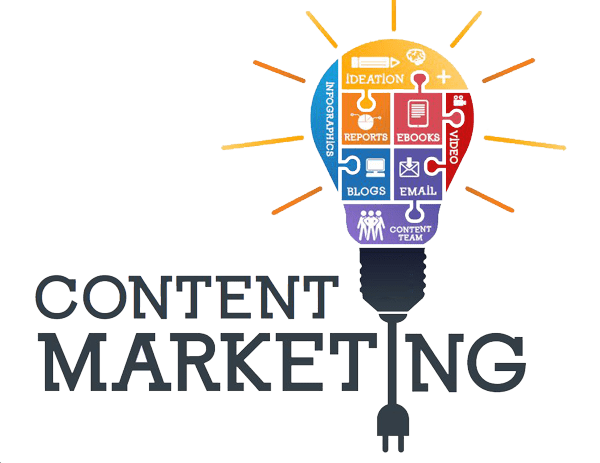Looking for the content marketing statistics in 2022? Here are the most amazing ones.
The process of designing, developing, and sharing information with your target audience is known as content marketing. It aids in the creation of brand recognition, persuasion of customers to take action, and income generation.
There are many different sorts of content marketing, such as social media and blogs, but every year, new trends and strategies develop that alter how businesses communicate with their customers.
As a marketer, you must understand what your competitors are focusing on in order to develop a strategy and differentiate yourself from the competition. Discover the key content marketing statistics in 2022, as well as trends to watch for throughout the year, in this post.
Content Outline
Best Content Marketing Statistics 2024

1. 82% of marketers are actively investing in content marketing, 10% are not utilising it, and 8% are unsure if their organisation uses it (HubSpot).
2. A defined content marketing plan is used by 43% of B2B marketers, and 60% of the most effective B2B marketers use it (Content Marketing Institute).
3. 69% of marketers devote attention to SEO (HubSpot).
4. Content marketing produces demand/leads, according to 60% of marketers. Furthermore, 70% of marketers believe that content marketing aids in audience education, and 60% believe that it aids in the retention of existing clients/customers (CMI).
5. In 2021, the video will be the most popular kind of marketing media, followed by blogs (which will be used by more than half of marketing teams), and finally infographics (HubSpot).
6. 73% of people admit to skimming blog content, while only 27% read them completely (HubSpot).
7. Targeting strategic keywords are the top SEO approach for 71% of businesses (HubSpot).
8. Every day, 51% of companies who invest in content marketing publish content (The Manifest).
9. A brief video is preferred by 69% of respondents when learning about a product or service. A text-based article, website, or post is preferred by 18%. An infographic is preferred by 4% of respondents. 3% prefer to read an ebook or manual on their computer.
10. Content is viewed as a critical business strategy by 81% of marketers (CMI).
11. The top three key goals of content creation are to increase sales, create customer connections, and raise brand awareness (eMarketer).
12. Content marketing generates more than three times the number of leads as outbound marketing while costing 62% less (Demand Metric).
13. In North America, 72% of the most effective businesses track the return on their content marketing efforts (eMarketer).
14. Only 4% of B2B marketers say they have no plans to create a content marketing strategy (CMI).
15. The audience’s informational demands are prioritised by 87% of B2B marketers over the organization’s sales/promotional communications (CMI).
16. The most outsourced content marketing activity among B2B marketers is content production (CMI).
17. B2B marketers’ top three organic content distribution platforms are social media, email, and their company’s blog/website (CMI).
18. 96% of B2B content marketers use LinkedIn (CMI).
19. Only 28% of B2B marketers say they do not use paid content distribution channels (CMI).
20. When developing content, 78% of B2B marketers do keyword research for SEO (CMI).
21. Only 6% of B2C marketers say they have no plans to create a content marketing strategy (CMI).
22. The most outsourced content marketing activity among B2C marketers is content production (CMI).
23. B2C marketers’ top three organic content distribution platforms are social media, email, and their company’s blog/website (CMI).
24. Blog posts/short articles, email newsletters, and videos are the top three content forms employed by B2C marketers (CMI).
25. Facebook (59%) and Instagram (21%), according to B2C marketers who use at least two organic social media networks, offer the best overall content marketing results (CMI).
26. Only 28% of B2C marketers do not make use of paid content distribution channels (CMI).
27. When developing content, 73% of B2C marketers do keyword research for SEO (CMI).
28. Google sends no organic search traffic to 90.63% of pages (Ahrefs).
29. Google sends no organic search traffic to 90.63% of pages.
30. A search engine is the starting point for 68% of online experiences (Brightedge).
31. Rather than using branded search, 71% of B2B researchers begin their inquiry with a generic search (Google).
32. 53% of customers say they always conduct research before making a purchase to ensure they are making the best decision possible (Google).
33. Within a year of publication, only 5.7% of pages will rank in the top ten search results (Ahrefs).
34. Mobile devices account for over two-thirds of all global online searches (Perficient).
35. 69% of marketers put money into SEO (HubSpot).
36. Keyword ranking, organic traffic, and time spent on page are the top three most commonly utilised SEO indicators (HubSpot).
37. In general, the more backlinks a page has, the more Google organic traffic it receives (Ahrefs).
38. Nearly 1,000 more relevant keywords will rank in the top ten for the average #1 ranking page (Ahrefs).
39. Hundreds of other keywords are also ranked for most top-ranking pages.
40. There is no link between Flesch Reading Ease scores and position in the rankings (Ahrefs).
41. Despite the fact that 32% of respondents believe the volume of content accessible overwhelms them, the majority (44%) say they normally consume three to five pieces of content before engaging with a vendor (DemandGen).
42. A webinar or pitch is preferred by 3% of respondents. A sales call or demo is preferred by 2% of respondents (Wyzowl).
Final Thoughts
While our research included data from a variety of sources, regions, and industries, keep in mind that these figures can only provide a general picture of the major trends and events in the content marketing world.

